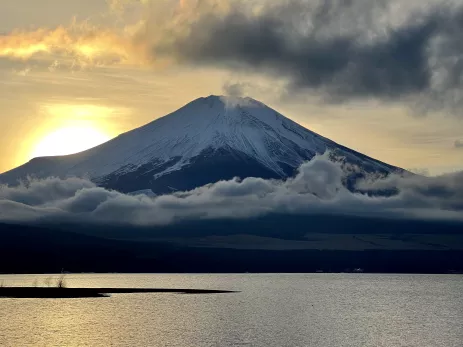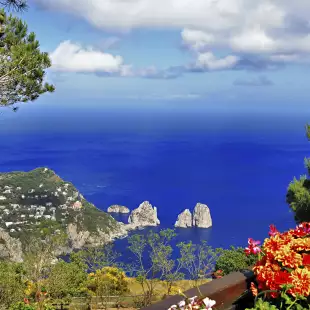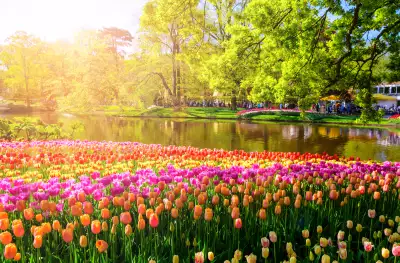The Best Volcano Holiday Destinations

Why do people visit volcanoes?
People have travelled to active and dormant volcanoes for centuries, looking for geological wonders and natural beauty. From peaks spewing lava to cooled rocky islands now boasting verdant rolling hills, volcano sites offer a wealth of experiences for all travellers.
Those looking for beautiful scenery can enjoy the area around the fertile base. And, for thrill-seekers, witnessing the heartbeat of the volcanic landscape means getting up close to active volcanoes.
Are there volcanoes in the UK?
While there are no active volcanoes in the UK, that doesn’t mean there were never any.
Did you know some of our favourite landmarks sit on the remains of old volcanoes?
In Scotland, Glen Coe is the remains of a super volcano that erupted over 420 million years ago, Arthur’s Seat, in Edinburgh, is an extinct volcano that first erupted 350 million years ago, and Edinburgh Castle sits on a volcanic plug.
The Giant’s Causeway in Northern Island is a UNESCO World Heritage Site created by eruptions pushing basalt rock 60 million years ago, forming the hexagonal columns we see today.
And the highest peak of Mount Snowdon in Wales is the remains of a 500-million-year volcano which has eroded over time.

Active Volcanoes in Europe
Holidays in Europe offer variety, from the cool climates of Iceland and Norway to the picturesque riverbanks of France and Germany, and the cultural delights of Italian towns and cities – and many offer the chance to see spectacular volcanic landscapes up close.
Volcanoes In Italy
One of the most volcanically active mainland European countries is Italy: There are thirteen volcanoes, only four of which are still active; Vulcano, Etna, Stromboli and Vesuvius.
Located near Naples, Vesuvius famously erupted in 79 AD destroying the surrounding Roman city of Pompeii and burying the city under layers of ash, where it remained until its rediscovery in 1748. The Bay of Naples, home to Vesuvius, is now a popular holiday destination where sunseekers and history lovers can enjoy the climate and immerse themselves in the rich history. To visit the UNESCO World Heritage sites of Pompeii and Herculaneum and experience these poignant cities on our tour of Pompeii, Capri and the Bay of Naples.

Mount Etna is the oldest volcano in the world, thought to have been active for the past 2.6 million years. Its most violent recorded eruption was in 1669, killing more than 20,000 people and leaving thousands homeless over several weeks. Due to the force, ash dispersed as far as the southern part of mainland Italy.
Thanks to its remarkable natural beauty and quaint, historical towns and cities, Sicily has enjoyed a rise in popularity. Visitors can enjoy the view of the volcano from Taormina, located a 45-minute drive from Mount Etna on the east coast, and take a drive as close as possible to the snow-capped summit on our Sicily tour.

The most recent volcano to erupt in Italy is Stromboli, which erupted in December 2022. The volcano which lies on an island off the coast of Sicily is one of the most active volcanoes on the planet; it has been almost consistently erupting for thousands of years. Close by is Vulcano, whose last major eruptions were in 1888-1890 and continues to emit sulfurous vapour, even causing an evacuation in 2021.
With three fascinating volcanoes to explore, you can find out more about Sicily in our Sicily Travel Guide.

Volcanoes In Iceland
If you’re looking for a dramatic natural landscape, nothing compares to the luna-landscapes of Iceland. With lava fields, glaciers, tundra, fjords and geysers, a holiday here will bring you in heady proximity to amazing volcanic sights.
Of the 82 known volcanoes in Europe, 32 of the volcanic systems are located in Iceland. Formed by extensive volcanic eruptions over 18 million years ago, over half the island’s land mass consists of volcanic land masses.
Of the many volcanoes in Iceland, Eyjafjallajökull is one of the most infamous. Its eruption in 2010 caused chaos throughout much of Northern Europe. Although relatively small, the resulting ash cloud disrupted air traffic in Europe, a total of 20 countries closed their airspace causing delays and cancellations which affected over 10 million travellers. Thanks to the eruption, and our fascination with volcanoes, Iceland received a boost in tourism which helped restart its economy following the 2008 financial crash.

Other notable volcanoes in Iceland are Hekla, the most active volcano in Iceland, and the latest Icelandic volcano to erupt on the island is Fagradalsfjall, erupting in August of 2022. You can enjoy a full-day guided tour discovering the contorted lava plateau through the Threngsli pass, see Eyjafjallajökull, visit Reynisfjara’s volcanic black sandy beach and bathe in the Blue Lagoon against the stunning backdrop of Fagradalsfjall on our Iceland Tour.

Volcanoes In Greece
With warm climates, spotless sandy beaches and centuries of history and culture, it’s not hard to see why Greece is one of the most popular tourist destinations pulling in millions of tourists yearly. The country has been shaped by its many volcanoes, creating islands in the surrounding seas and carving cliffs into the mainland. It may have been a while since any volcanic activity, but you can still visit the dramatic remnants of Greece’s volcanic past. There are four active volcanoes in Greece, including the well-known Island of Santorini.
The white cubist architecture of Santorini is quintessential of the Greek Islands. With its reputation for stunning panoramas of 1,000-foot cliffs rising above the dark blue sea, it’s one of the most famous islands in the world. In the bronze age, the island was blown apart by one of the largest volcanic explosions in history, destroying the Minoan civilisation in Crete. While the volcano hasn’t erupted since 1950, a small crater still bubbles away on an island in the middle of the bay, and you can easily spot the pumice stones floating in the water. Visit Santorini and other Greek Islands on our Aegean Odyssey tall ship cruise.

The ring of fire
Roughly 90 per cent of all earthquakes occur along the Ring of Fire, and the ring is dotted with 75 per cent of all the active volcanoes on the planet. Stretching from the southern tip of South America up along the coast of North America, across the Bering Strait and down through Japan and into New Zealand. These are some of our favourite volcanoes from this dramatic volcanic region:
Costa Rica
In warmer climates, Costa Rica is one of the most scenic and biodiverse countries on the planet. From national parks to wildlife havens and nature reserves, a quarter of the country is protected. As well as a diverse selection of wildlife, Costa Rica is also home to six active volcanoes and 61 dormant ones. The popular and best-known volcano in Costa Rica is Arenal, which was the country’s most active volcano until 2010 when it entered its resting phase. Visit Arenal and the other highlights of Costa Rica on our tour.

Ecuador
From tropical jungles to highlands, the diverse natural beauty of Ecuador has enchanted travellers for centuries. Visitors to this South American country can enjoy tropical beaches, wildlife spotting and adventures up one of the 22 active volcanoes, including one of the most well-known, Cotopaxi.
Cotopaxi lies 31 miles from the Capital, Quinto, in Cotopaxi National Park. It’s the third-highest volcano on the planet and one of the nation’s most active. While there are reports of low-lying seismic activity, the volcano’s last eruption was in 2016. The surrounding national park is an ecological sanctuary boasting a varied topography with unusual flora and a variety of birdlife, including Andean gulls and hummingbirds. We visit the park and the symmetrical volcanic cone of Cotopaxi on our curated tour of Ecuador and the Galapagos.

USA
We’ve all heard the theories on the supervolcano under Yellowstone National Park, but did you know there are 169 active volcanoes in the US? Most are located in Alaska, where eruptions happen virtually every year, most of the Alaskan volcanoes are on the Aleutian Arc, which extends westwards to Kamchatka. Find out more about our holidays to Alaska and other parts of the USA.

Japan
Japan has one of the highest numbers of volcanoes on the planet with 55 considered active. The most popular of Japan’s volcanoes is the national icon, Mount Fuji. Fringed by thick forests and a crescent-shaped ring of lakes, the area offers stunning panoramas that lure over 300,000 tourists. This classic example of a volcanic cone last erupted in 1707, sweeping volcanic ash and rock and blanketing the city of Edo more than 100 kilometres away. You can visit Mount Fuji on a Riviera Travel tour of Japan.

Fact file:
The Youngest Volcano
The youngest volcano on Earth is Particutin, in Mexico, which erupted from a cornfield on February 1943, and most of the activity happened during the first year. It was only volcanically active until 1953 and gave scientists the rare opportunity to study its birth, evolution and death.
The Oldest Active Volcano
Mount Etna is thought to be the oldest active volcano, first erupting in the year 1500 BC, and has erupted 200 times since. It’s also one of the largest volcanoes.
The Largest Volcano
The world’s largest active volcano is Mauna Lao, Hawaii. The gentle dome shape adds to its large area and has averaged one eruption every 3.6 years since 1843.
The Most Active Volcano
Kilauea, Hawaii has been erupting almost continuously since 1982, making it the world’s most active volcano.
The Country With The Most Active Volcanoes
Indonesia has 58 recently active volcanoes, making it the country with the most active volcanoes, followed by Japan with 44 and the United States with 42.









